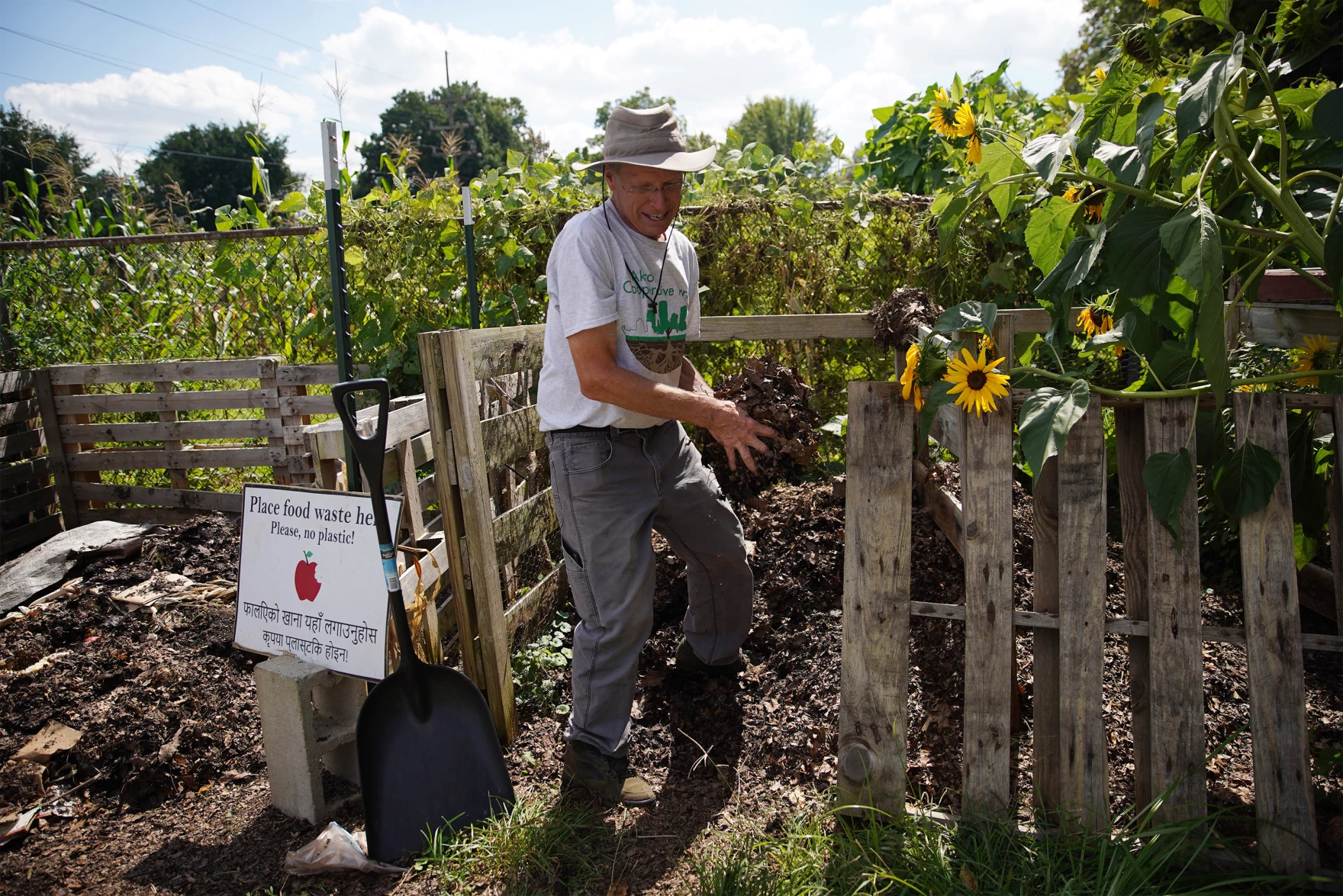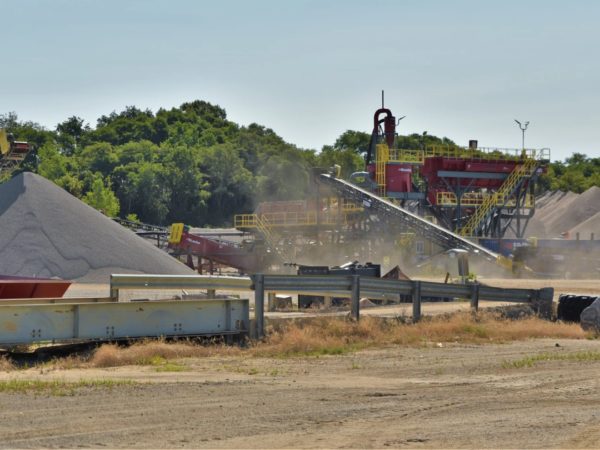
By Zaria Johnson, Ideastream Public Media
This story was originally published by Ideastream.
In Northeast Ohio, composting is becoming more common due, in part, to local organizations sharing knowledge, resources and the benefits of composting for the planet.
Leftovers often end up in the trash rather than in our stomachs. But when that food makes its way to local landfills, it often festers, releasing excessive amounts of methane and carbon dioxide that contribute to global warming and climate change.
“The problem with that is we know methane and CO2 are huge contributors to greenhouse gas emissions overall,” said Ben McMillan, founder and owner of materials management company Rubber City Reuse. “In global warming, we like to talk about CO2, but methane is actually … roughly 80 times more warming than CO2.”
Based in Akron, Rubber City Reuse runs a compost collection company that serves more than 200 customers in Summit, Portage and Stark counties.
By putting food scraps into a compost pile, rather than into the trash can, the carbon footprint for an individual, household or company can be significantly reduced, McMillan said.

Rubber City Reuse founder and owner Ben McMillan adds yard waste to a pile of food waste for composting at his company’s main yard in Mogadore, Ohio. (Ryan Loew/Ideastream Public Media)
“We all have experience with making food rot in the fridge. Just make it rot in a pile of leaves,” he said. “The best way is take some leaves this fall, or even grass clippings if you mulch your grass when you mow it, and then add your food scraps to it. … At the end of the day, you really don’t have to turn it at all.”
In the U.S., food waste is the single most common material sent to landfills at more than 24% , according to the Environmental Protection Agency, and wasted food is responsible for nearly 60% of landfill methane emissions.
What is composting?
Composting allows for the organic material to be properly broken down since it is better exposed to oxygen that allows for bacteria to better break down the material until it is fully processed and can be reused as eco-friendly fertilizer.
“You don’t want to see any chunks of food,” Mc Millan said. “The consistency of Play-Doh when you leave it out for like a day, like it’ll still kind of stick to itself, but it’s starting to maybe get like a little crumbly — that’s the texture you’ll have when it’s finished.”
Bacteria and organisms that naturally develop in the compost will still produce some CO2, McMillan said, but at amounts much smaller than in landfills.
Compost is used across the four acres at Akron Cooperative Farms, where residents, refugees and immigrants can grow food for their families, or to sell at the farmers market.
“One of the most important things for people to do is to be able to take their food waste instead of throwing it in the landfill and the garbage, hey, let’s make black gold out of it,” Executive Director Douglas Wurtz said. “So, they can bring it here with our community composting program and dump the compost, and we will be able to take it from there.”
Once the food scraps are dropped off, they’re tossed into a pile where it can be mixed with leaves and begin to break down. It takes about six weeks of turning and moving the scraps from pile to pile as it continues to break down before the compost is ready to be reused by the urban farmers.
“In the very beginning, gardeners were buying bags of compost and bringing it to their garden,” Wurtz said. “That was expensive, and so, there’s really a great opportunity for them with what we have here.”

Douglas Wurtz, executive director of Akron Cooperative Farms, sifts soil made from composting through his hands. (Photo Credit: Ryan Loew/Ideastream Public Media)
Composting as waste management
It’s possible for composting to be implemented at a larger scale, McMillan said, but that will require rethinking waste management and reducing incentives to landfills.
In 2022, about 7 million tons of waste in Ohio’s landfills came from states on the east coast, according to the Ohio Environmental Protection Agency.
“Where do you think New York City’s trash goes? It goes to Tuscarawas County. Where do you think Philadelphia’s trash goes? It goes outside of Youngstown. We take in whole train loads of other states and cities trash because it’s so cheap to dump stuff here.”
Landfills also lead to the creation of leachate, a term used to define stormwater runoff from landfills that’s come in contact with the chemicals and contaminants in the waste.
At landfills without proper lining, this runoff can contaminate groundwater, McMillian said, or even make its way into local waterways.
“The leachate … that is trapped and collected is sent to our wastewater treatment plants where it’s cleaned, filtered, all that good stuff,” he said, “but then you got to remember, that’s still liquid that gets discharged into our local river.”
Though the water is fully treated by the time it enters the river, McMillan said composting, if more widely adopted, can help reduce carbon dioxide and methane emissions, while helping to reduce harmful runoff from landfills.
Climate change is affecting our food, and our food is affecting the climate. NPR is dedicating a week to stories and conversations about the search for solutions.
Catch more news at Great Lakes Now:
Oberlin Food Hub brings fresh produce to Ohio’s food banks while supporting local farmers
A cleaner Cuyahoga River faces a growing threat from stormwater runoff
Featured image: Douglas Wurtz, executive director of Akron Cooperative Farms, grabs a handful of leaves to add to a compost pile. The leaves help mitigate the smell, he said, as well as bugs like flies. (Photo Credit: Ryan Loew/Ideastream Public Media)




